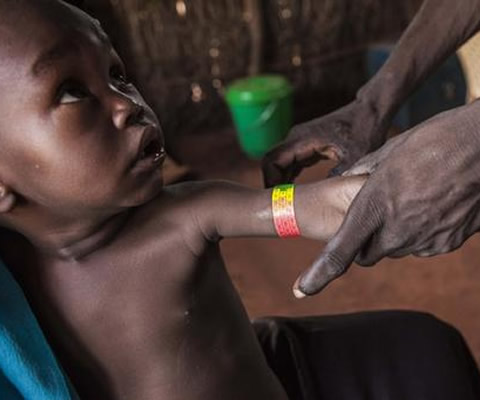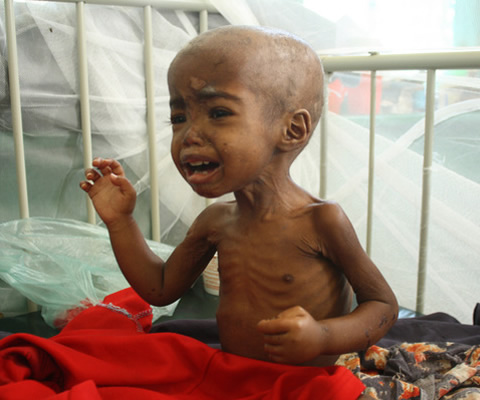Inpatient treatment
For inpatient treatment you should follow the WHO protocols, including those that address complications and underlying diseases, and seek specialist advice.
Select the text boxes in the image for brief summary information.
Select one of the text boxes for more information.
IV fluids
IV fluids should be only given if absolutely necessary, for:
- Severe dehydration
- Shock or
- No oral intake possible due to surgical reasons
The risk of a hyperhydration and cardiac failure is very high in malnourished children.
Outcome
Worse outcomes are associated with:
- Low sodium
- Low MUAC
- Bacteraemia
- Hypoxia
- Hypokalaemia
- Oedema
Chronic disease
You should treat other underlying chronic diseases:
- Worms
- Malaria
- Measles
- Vitamin A deficiency
- TB
- HIV, with appropriate testing and counselling
RUTF and iron
Therapeutic milks must be used first, i.e. F-75, F-100, and after stabilization, PPN is introduced.
In the presence of a complication, you should not give iron or PPN, but give therapeutic feed first with folic acid, and then start iron after recovery.
If the child has diarrhoea, ORS should not be used as the rehydration solution. Malnourished children often have problems with their electrolytes, e.g. low potassium or high sodium, so ReSoMal or dilute ORS should be used, i.e. 1 sachet in 1.5 L of water instead of 1 L.
Signs of improvement
Signs of improvement include:
- Return of appetite and no need for parenteral treatment
- Ascending weight curve between two weight measurements
- Significant reduction to oedema+ or absence of oedema
- Medical complications under control, i.e. is asymptomatic
- No need of IV or IM treatment

